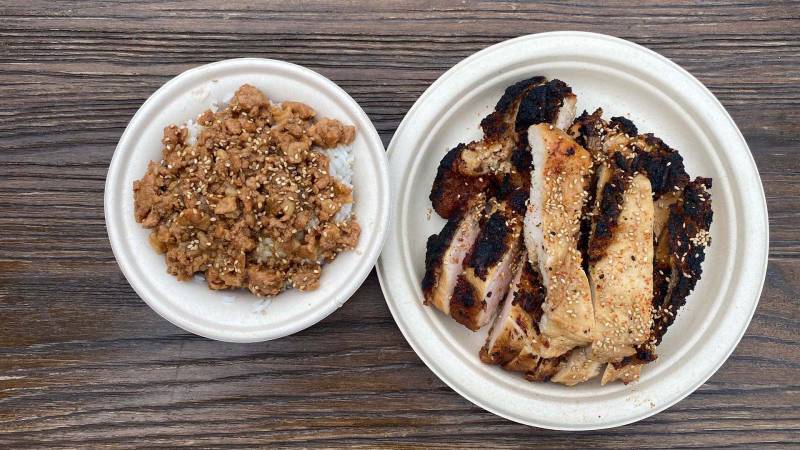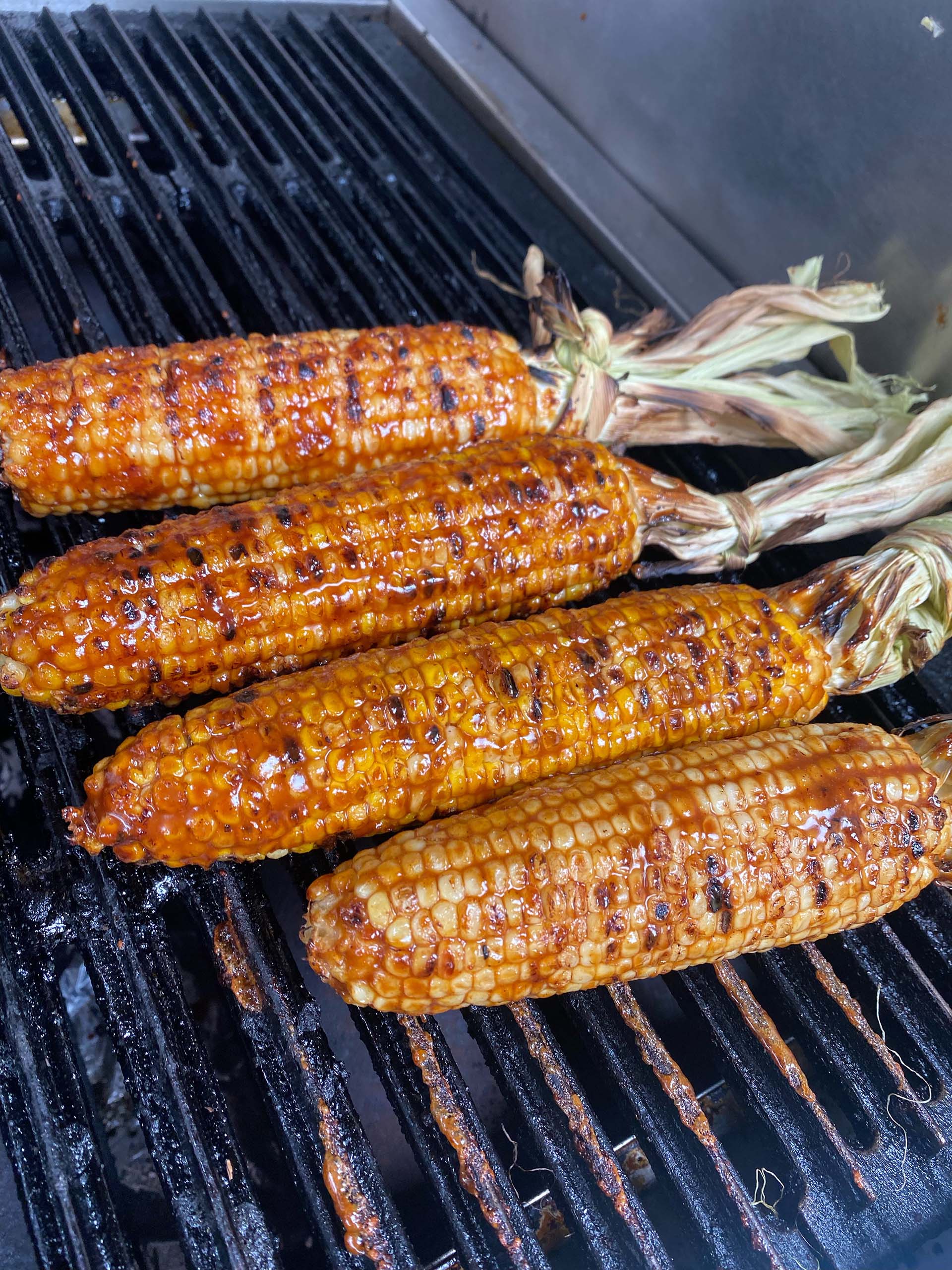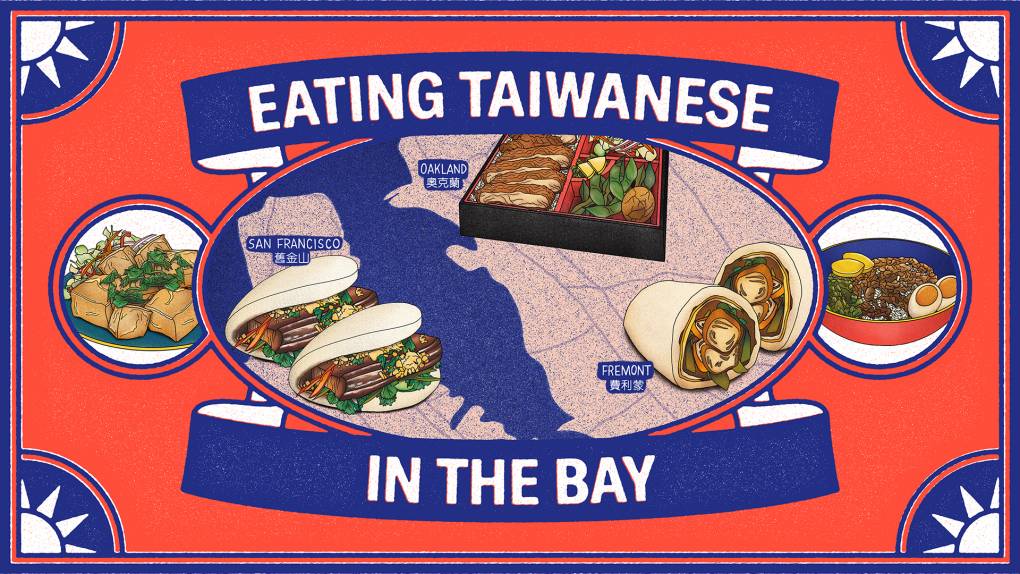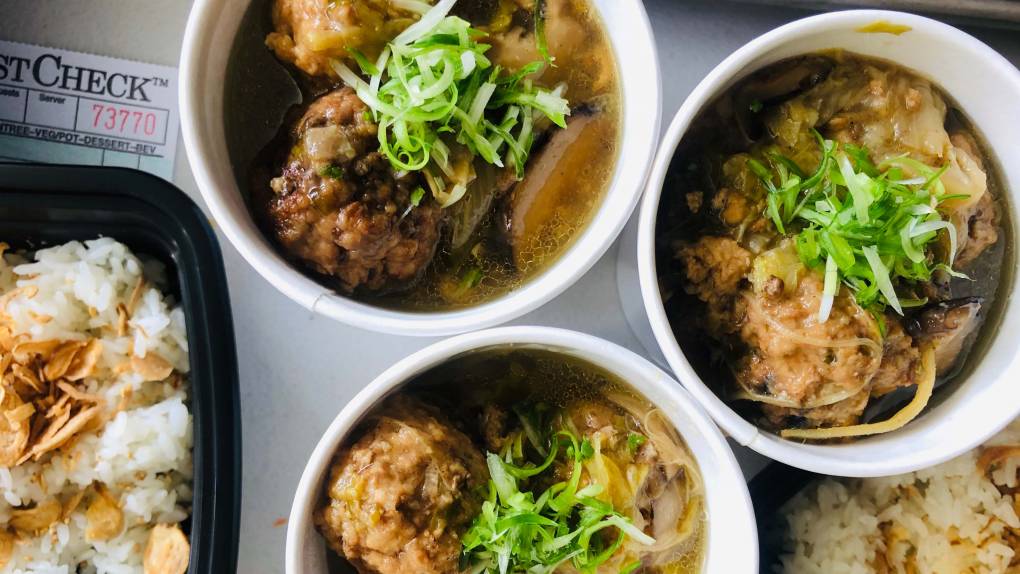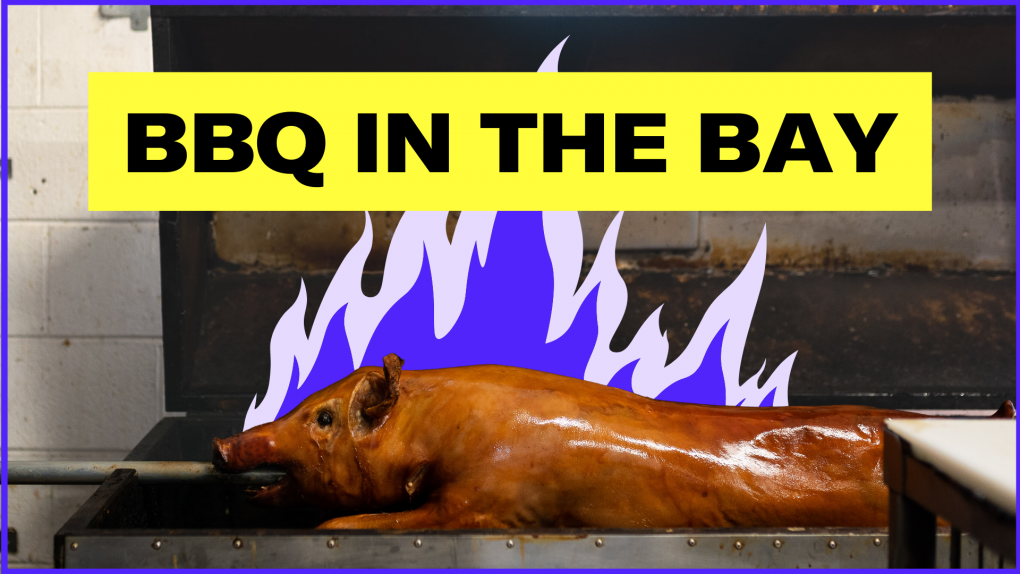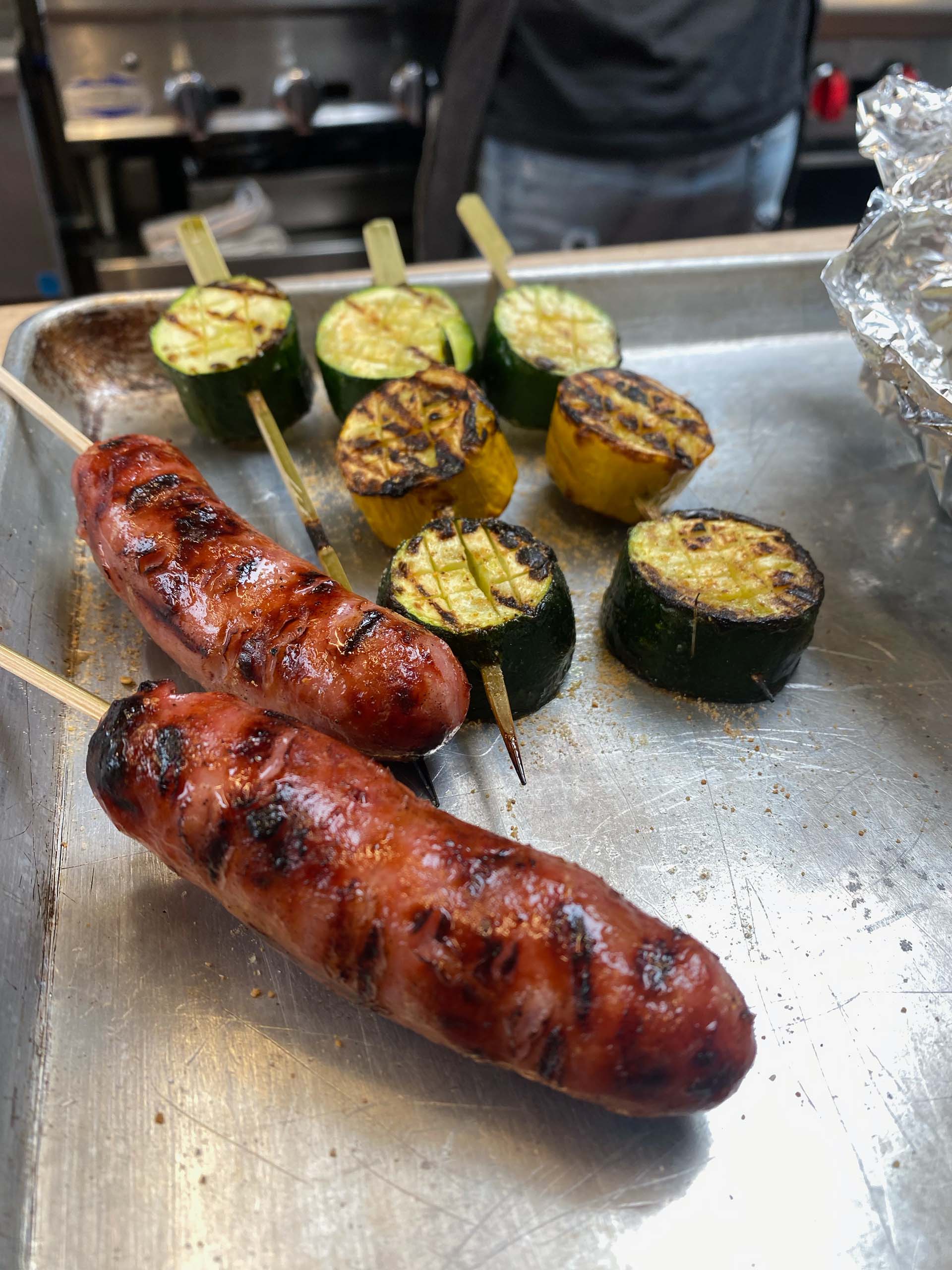It was one of the most Taiwanese things I’d ever seen in the Bay: a crowd of hungry people lined up in front of a long, makeshift charcoal grill on Good to Eat Dumplings’ string light–bedecked side patio, everyone gawking at the huge-ass chicken cutlets and Taiwanese sausages charring and sizzling over the flames. More than anything, what hit me was the distinctive smell of shacha, aka Taiwanese barbecue sauce, wafting through the air, smoky and a little bit spicy, undergirded with the pungency of dried fish — a smell intimately familiar to anyone who’s ever strolled through a Taiwanese night market.
“We missed that shacha-filled aroma,” says Angie Lin, who runs Good to Eat Dumplings along with her wife Tony Tung, the restaurant’s chef. “It made all of us so excited.”
Last September’s Taiwanese-style barbecue event at Good to Eat was probably my favorite food event of the year. This weekend, the Emeryville restaurant is running it back, this time for two nights — July 29 and 30 — instead of one, in hopes of satisfying what wound up being a huge demand. As it turns out, Lin and Tung weren’t the only ones nostalgic for Taiwanese barbecue.
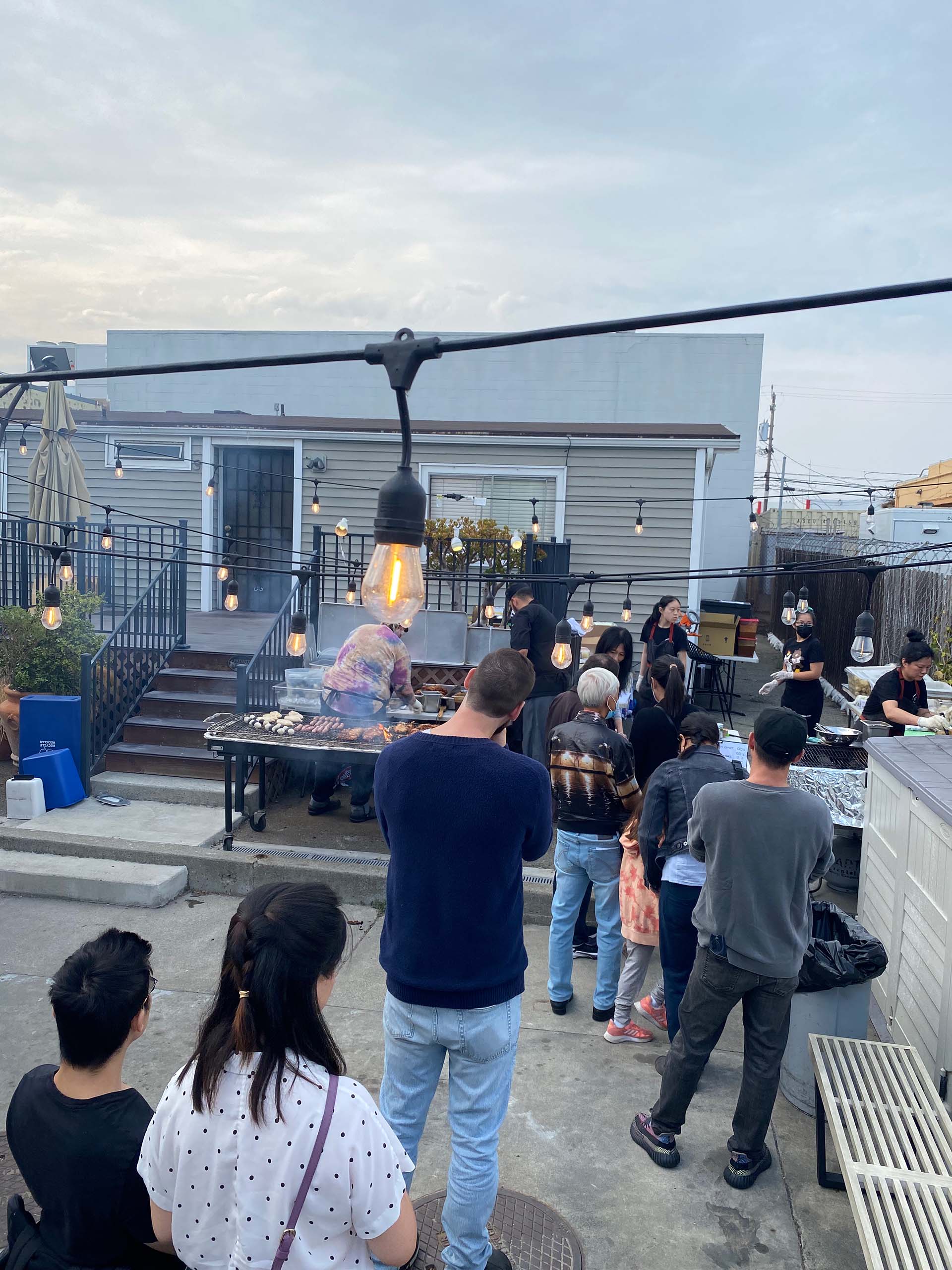
The inaugural edition of the event took place during the Mid-Autumn Festival, which for Taiwanese people is probably even more closely associated with outdoor grilling than the Fourth of July is for Americans. As Lin explains it, people in Taiwan have always loved grilling outdoors, but it became codified as a national pastime of sorts in the early ’80s, when a barbecue sauce company launched a big advertising campaign during the lead-up to Mid-Autumn Festival. Lin remembers TV commercials that emphasized how nice it was to sit and chat in the park while skewers of marinated meat sizzled on the grill.
“For Taiwanese people, you need to get together [for Mid-Autumn Festival] anyway,” she says. “You want to stay outside to enjoy mooncake and watch the full moon. And during that whole season, the temperature in Taiwan is just right.”
